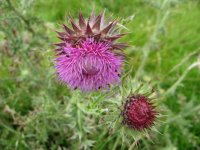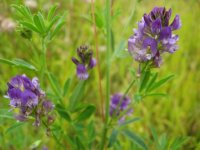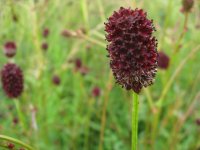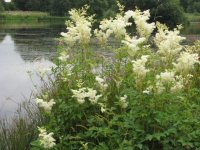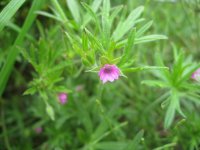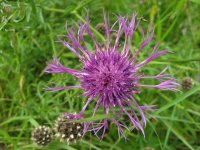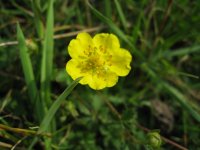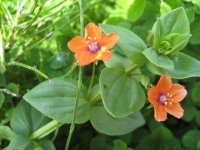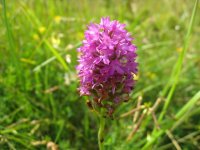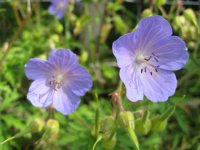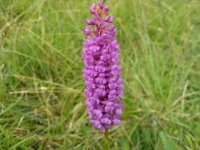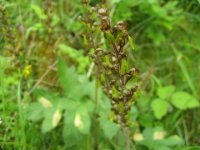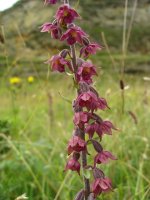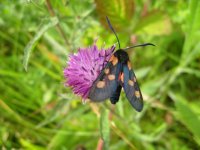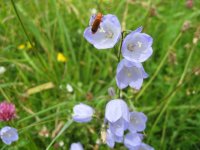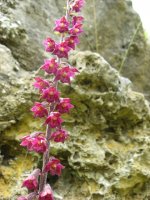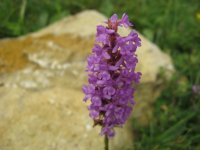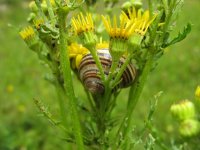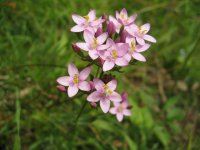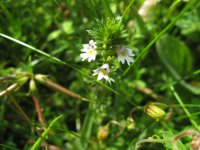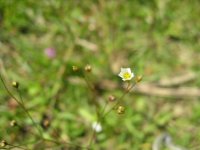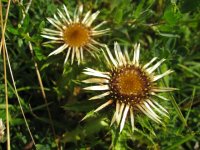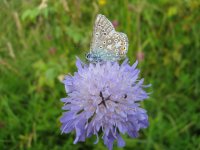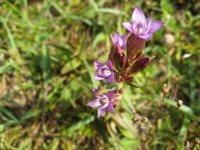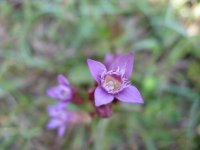brianfm
Botanical Birder
Part One
Yes, you have guessed tis me! I spent two days in the sun in the area of Bishop Middleham, that’s south of the Tyne in darkest Durham. One day was to explore the area prior to our RSPB trip a few days later, so as ever, trying to find ways to cut out work I have decided to combine the two reports into one. I didn’t have to tell you that really, but there you are I’m an honest Geordie and a generous one too as you will see when I put up copious numbers of flower photos and one or two or even three insect photos. Now admit it, you cannot wait! First you must read the report………and no cheating please and just looking at the photos!
23rd and 26th July. At last summer had arrived, butterflies were on the wing, pollen in the air and a young man (that’s me) thoughts turned to the birds and bees……and wild flowers, so a trip was made to Bishop Middleham, which is a limestone area in Durham and which has a working quarry and an old quarry which is a haven for things natural and is well known for the fact that European Bee-eaters nested there a few years ago.
We started off with a walk from the rather nice village, past some very interesting old buildings and the farm buildings, and across to the smallish lake. Durham Bird Club do conservation work here and I the farmers are involved too. Very quickly we found Yellow Wagtail, a species very much under threat now, but often seen in this localised area. Grey and Pied Wagtails were about too. Swallows, House Martins and Swifts were all feeding. It was hot even before noon so I’m pleased the pace was an easy one. The lake and surrounding area is renowned for its birds and I can report that sightings included Little Ringed Plover, Golden Plover, Lapwing, Green Sandpiper, Greenshank and Snipe with a supporting act including Little Grebe, Great Crested Grebe, Grey Heron, Mute Swan, Mallard, Tufted Duck, Teal, Shoveller, Coot and Moorhen. The bird that excited me however was the calling Corn Bunting. That once common bird, which is now a rarity. I can’t remember the last time I saw one in the UK which was in Northumberland, before I was quite so keen on birding. The song is unmistakeable, that jingle of keys, and I learnt it not locally, but in Spain where Corn Buntings, thankfully were everywhere. Anyway learning the song is like learning to ride a bike, once learnt you do not forget, although having been on a bike not so long ago I’m not to sure on that belief! Believe me though, watching that Corn Bunting through the telescope (I used someone else’s scope as I had felt it too hot t o carry my own, said I was honest;-)) singing away in the sunshine atop of a thistle was some sight.
We eventually pulled our selves away from viewing the lake and keeping to the path negotiated a rather tricky opening and climb through the stone wall. This is where the wildflowers, Butterflies and odonata started to come into there own. Butterflies seen included Large White, Small White, Red Admiral, Meadow Brown, Small Heath and Common Blue. Odonata included unidentified hawker and darter species, Common Blue Damselfly, Blue Tailed Damselfly and Emperor Dragonfly. Wildflowers included some firsts for me and generally a very good selection. Thistles were perhaps the most numerous including Creeping Cirsium arvense, Spear Cirsium vulgare, Musk Carduss crispus a new one for me and Marsh Cirsium palustre. There was also Common Cetaurea nigra and Greater Knapweed Centaurea scabiosa. Other flowers on the walk to the Reed bed and pond included Scarlet Pimpernel Anagallis arvensis, White Campion Silene latifolia, Perforate St Johns Wort Hypericum perforatum, Weld Reseda luteola, Agrimony Agrimonia eupatoria , Great Burnet, Sanguisorba officinalis Lucerne Medicago sativa, Cut Leaved Cransebill Geranium dissectum, Dovesfoot Cranesbill Geranium molle, Common Toadflax Linaria vulgaris , Creeping Cinquefoil Potentilla retans and Rest Harrow Ononis spinosa etc etc.
Lunch time was a well earned rest and time to take in some food and liquid. It would have been easy to become dehydrated today. Kestrel, Jay and Sedge Warbler were seen near the pond along with a pair of Mute Swans with cygnets. I was beginning to wish that I had brought sun lotion with me, but resisted in asking for a drop of someone else’s. On the day we took the group there were certainly a few feeling the effects of the sun as they dropped down for lunch. After lunch we made towards the village still counting the Common Spotted Orchids Dactylorhiza fuchsii and what I am sure was odd Pyramidal Orchids Anacamptis pyramidalis. Perhaps someone could advise on that please as I shall put a photo up. We had time for a cool drink in one of the pubs before setting off to the old Quarry which will form the second part of my report. Coming soon.
Photos 1) Musk Thistle 2) Lucerne 3) Great Burnet 4) Meadowsweet 5) Cut-leaved Cranesbill
Yes, you have guessed tis me! I spent two days in the sun in the area of Bishop Middleham, that’s south of the Tyne in darkest Durham. One day was to explore the area prior to our RSPB trip a few days later, so as ever, trying to find ways to cut out work I have decided to combine the two reports into one. I didn’t have to tell you that really, but there you are I’m an honest Geordie and a generous one too as you will see when I put up copious numbers of flower photos and one or two or even three insect photos. Now admit it, you cannot wait! First you must read the report………and no cheating please and just looking at the photos!
23rd and 26th July. At last summer had arrived, butterflies were on the wing, pollen in the air and a young man (that’s me) thoughts turned to the birds and bees……and wild flowers, so a trip was made to Bishop Middleham, which is a limestone area in Durham and which has a working quarry and an old quarry which is a haven for things natural and is well known for the fact that European Bee-eaters nested there a few years ago.
We started off with a walk from the rather nice village, past some very interesting old buildings and the farm buildings, and across to the smallish lake. Durham Bird Club do conservation work here and I the farmers are involved too. Very quickly we found Yellow Wagtail, a species very much under threat now, but often seen in this localised area. Grey and Pied Wagtails were about too. Swallows, House Martins and Swifts were all feeding. It was hot even before noon so I’m pleased the pace was an easy one. The lake and surrounding area is renowned for its birds and I can report that sightings included Little Ringed Plover, Golden Plover, Lapwing, Green Sandpiper, Greenshank and Snipe with a supporting act including Little Grebe, Great Crested Grebe, Grey Heron, Mute Swan, Mallard, Tufted Duck, Teal, Shoveller, Coot and Moorhen. The bird that excited me however was the calling Corn Bunting. That once common bird, which is now a rarity. I can’t remember the last time I saw one in the UK which was in Northumberland, before I was quite so keen on birding. The song is unmistakeable, that jingle of keys, and I learnt it not locally, but in Spain where Corn Buntings, thankfully were everywhere. Anyway learning the song is like learning to ride a bike, once learnt you do not forget, although having been on a bike not so long ago I’m not to sure on that belief! Believe me though, watching that Corn Bunting through the telescope (I used someone else’s scope as I had felt it too hot t o carry my own, said I was honest;-)) singing away in the sunshine atop of a thistle was some sight.
We eventually pulled our selves away from viewing the lake and keeping to the path negotiated a rather tricky opening and climb through the stone wall. This is where the wildflowers, Butterflies and odonata started to come into there own. Butterflies seen included Large White, Small White, Red Admiral, Meadow Brown, Small Heath and Common Blue. Odonata included unidentified hawker and darter species, Common Blue Damselfly, Blue Tailed Damselfly and Emperor Dragonfly. Wildflowers included some firsts for me and generally a very good selection. Thistles were perhaps the most numerous including Creeping Cirsium arvense, Spear Cirsium vulgare, Musk Carduss crispus a new one for me and Marsh Cirsium palustre. There was also Common Cetaurea nigra and Greater Knapweed Centaurea scabiosa. Other flowers on the walk to the Reed bed and pond included Scarlet Pimpernel Anagallis arvensis, White Campion Silene latifolia, Perforate St Johns Wort Hypericum perforatum, Weld Reseda luteola, Agrimony Agrimonia eupatoria , Great Burnet, Sanguisorba officinalis Lucerne Medicago sativa, Cut Leaved Cransebill Geranium dissectum, Dovesfoot Cranesbill Geranium molle, Common Toadflax Linaria vulgaris , Creeping Cinquefoil Potentilla retans and Rest Harrow Ononis spinosa etc etc.
Lunch time was a well earned rest and time to take in some food and liquid. It would have been easy to become dehydrated today. Kestrel, Jay and Sedge Warbler were seen near the pond along with a pair of Mute Swans with cygnets. I was beginning to wish that I had brought sun lotion with me, but resisted in asking for a drop of someone else’s. On the day we took the group there were certainly a few feeling the effects of the sun as they dropped down for lunch. After lunch we made towards the village still counting the Common Spotted Orchids Dactylorhiza fuchsii and what I am sure was odd Pyramidal Orchids Anacamptis pyramidalis. Perhaps someone could advise on that please as I shall put a photo up. We had time for a cool drink in one of the pubs before setting off to the old Quarry which will form the second part of my report. Coming soon.
Photos 1) Musk Thistle 2) Lucerne 3) Great Burnet 4) Meadowsweet 5) Cut-leaved Cranesbill
Attachments
Last edited:




